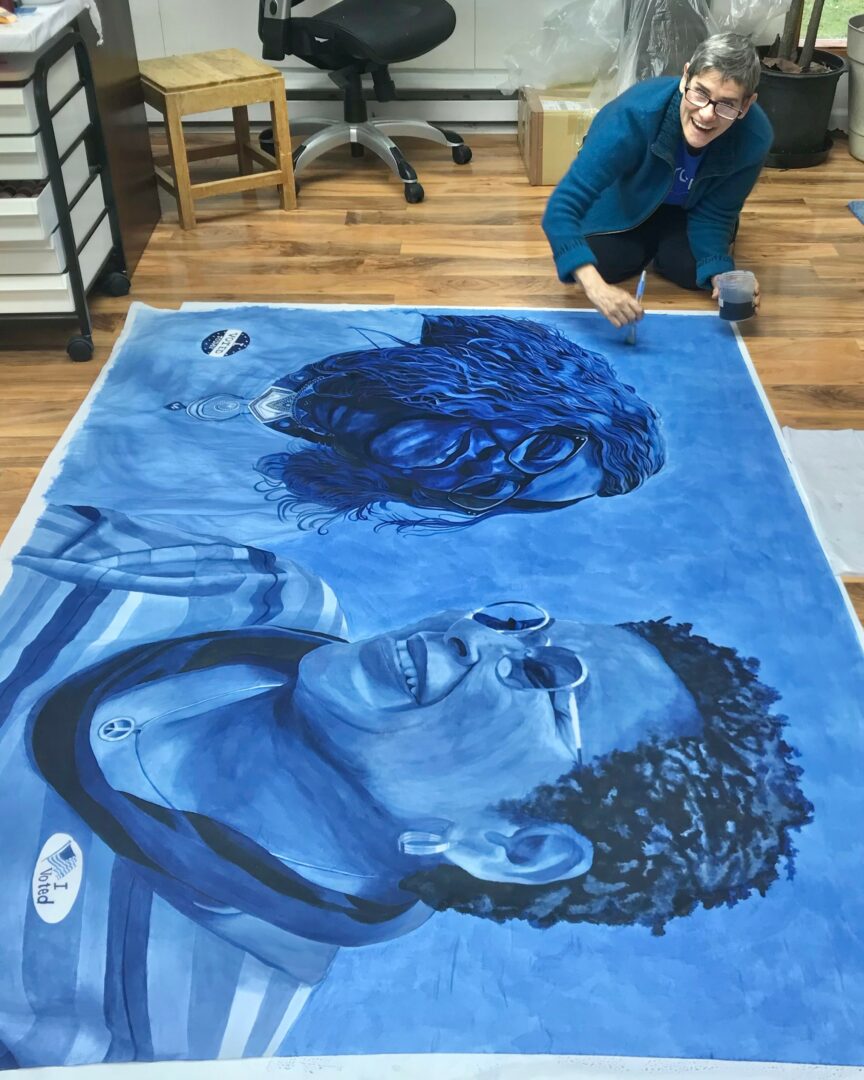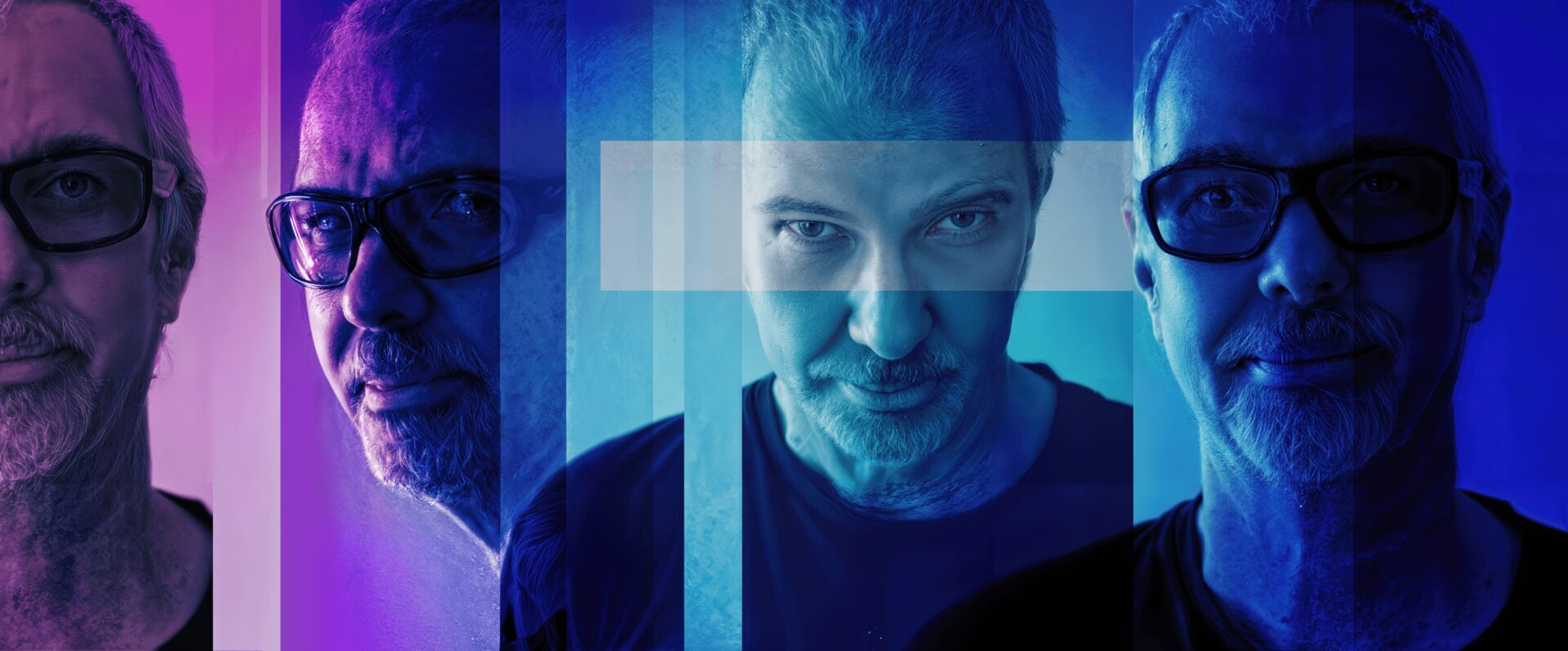Alright – so today we’ve got the honor of introducing you to Hollis Chatelain. We think you’ll enjoy our conversation, we’ve shared it below.
Hi Hollis, so excited to talk about all sorts of important topics with you today. The first one we want to jump into is about being the only one in the room – for some that’s being the only person of color or the only non-native English speaker or the only non-MBA, etc Can you talk to us about how you have managed to be successful even when you were the only one in the room that looked like you?
Ever since I was a child I’ve had an independent spirit and allowed my heart and intuition to guide me. Challenges attract me and I have always followed the idea of “Say yes, and figure out how to do it afterwards”. My mother gave me a poster as an adolescent that said “Men who try to do something and fail are infinitely better than those who do nothing and succeed.”
(I so wish that the quote said “Women” but that just didn’t exist back then!)
But I guess I was always willing to try something even if I might fail.
This philosophy led me to do Outward Bound as a teenager, to go to Africa with the Peace Corps, to have my first child in a bush hospital (delivered by mid-wives by kerosene lamp), and to create art that was new and innovative in the mostly traditional field of quilting.
When I moved back to the states after living and working for humanitarian organizations in Africa for 12 years, I felt a deep love for the people of that continent and wanted others to experience my passion. I wanted to show the positive side of Africa, the beauty of the people, and the everyday life that I felt was worth portraying.
I had never painted before but thought I could figure out how to paint on fabric. I ended up doing something that had never been done in the quilting world. I painted very large images of people and life in Africa with thickened dyes, often in monochromatic color schemes, and then I quilted them with realistic colors.
When I applied to the shows with my quilts I had no idea that my work was so atypical since I had never been to a traditional quilt show. It was actually the first time quilts like I made were ever shown at quilts shows and it caused great controversy, especially when they won big awards. Not only was the imagery out of the box because they were large African faces, people were also asking “Is it a quilt that is painted or a painting that is quilted?”
Despite all of this, timing is important and I was ahead of my time. It took years before realistic images of people (especially people of color) became common in quilt shows. But my quilts eventually helped bring the medium of quilts into the art world.

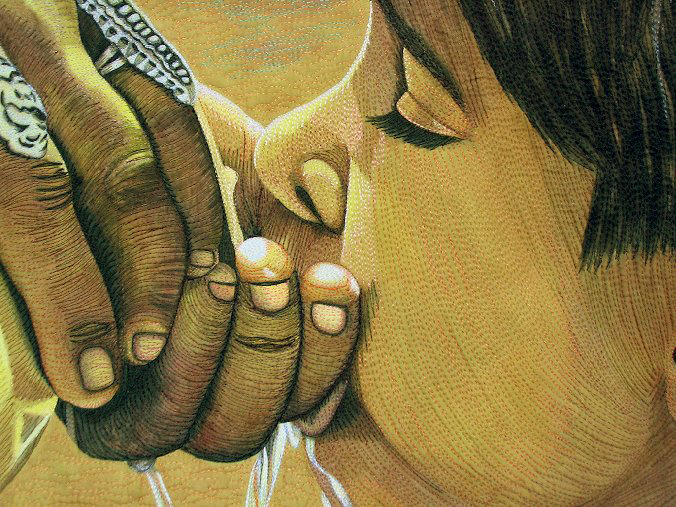
Thanks for sharing that. So, before we get any further into our conversation, can you tell our readers a bit about yourself and what you’re working on?
My time is divided between two separate passions.
My first passion is creating my art. Most of my work is motivated by social and environmental issues. My tagline is Awareness Through Art because I believe that art has the ability to inspire and touch people, while drawing them in emotionally. Most of my art is based on my dreams and I work in textiles because they are soft, inviting, and familiar. My pieces are large (up to 10 feet wide or high), intricate, with sometimes 25K yards of thread quilted over the textile paintings, and often monochromatic. People dominate my imagery, and the people tell their stories.
My second passion is teaching. I teach both nationwide and internationally. Many of my classes are based on my 10-year art series where students learn to draw, and study color and the basics of design, all with the idea of emotion in mind. A number of students continue, studying with me for 20 years or more. I also hold critique classes where students work on their projects at home and once/month we have a study group of critique and discussion.
I focus on giving students the artistic tools and the emotional understanding to create their own art. Through the classes, they gain the confidence and the knowledge to express themselves in their chosen medium and art style. My goal is to create a safe, supportive environment where creativity flourishes.
Before the pandemic I traveled extensively and always taught and lectured in person. Now 2/3’s of my teaching and public speaking is through Zoom. Even though I love the in person experience, Zoom allows me to reach a broader audience.
My art and classes can be found on my website: www.hollisart.com
I have been invited to speak at the Studio Art Quilt Associates (SAQA) international conference in St. Petersburg, FL that will take place April 3-6, 2025. My subject will be Infusing Your Art with Emotional Power.
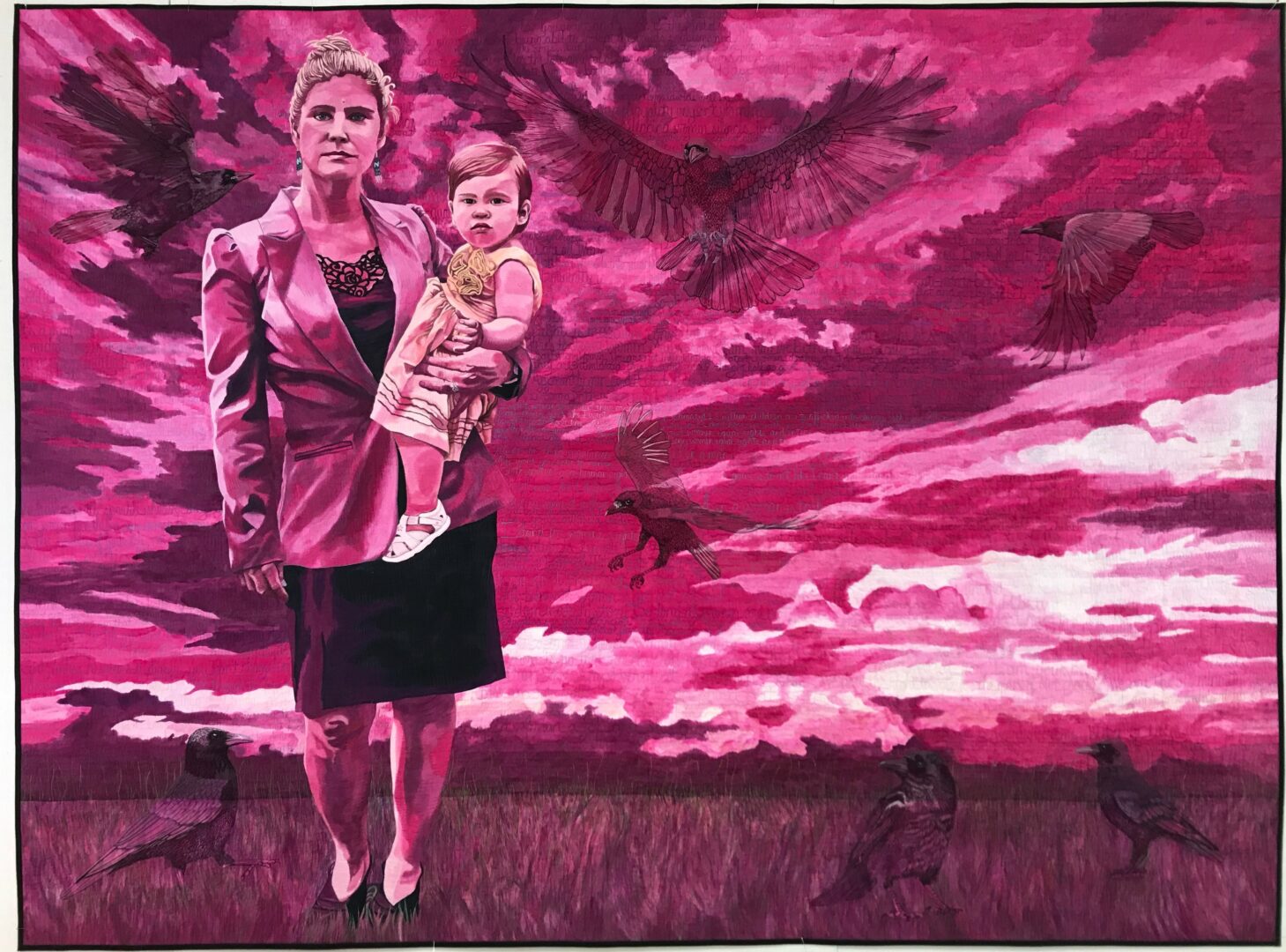

There is so much advice out there about all the different skills and qualities folks need to develop in order to succeed in today’s highly competitive environment and often it can feel overwhelming. So, if we had to break it down to just the three that matter most, which three skills or qualities would you focus on?
Passion – I am truly passionate about what I do, waking up every day excited to work on my latest piece or teach my classes. This passion carries over into my life is so many ways. My passion keeps me optimistic, keeps me going through the rough moments, and it spills over in everything I undertake.
Respect – Living in Africa taught me to respect people, to not judge through preconceived ideas, and it helped me to remain more broad minded. The goal of always trying to treat everyone with respect and dignity has helped me be more compassionate, and a better artist and teacher. It has also opened doors and kept me receptive to learning. All of these qualities are important in an artist.
Determination – Stay firm in your purpose. I feel that I was meant to make the art I make. Since so much of my work comes through in my dreams, I know it is from deep inside of me. My subconscious leads me to my next piece. My determination helps me have more confidence and move through to the next challenge.
Believe in yourself. Surround yourself with people who are supportive and positive. Even if you get off track and end up in a different field temporarily, keep the faith. We learn from each new endeavor and when you look back later, you may be able to connect the dots to where your journey has led you.

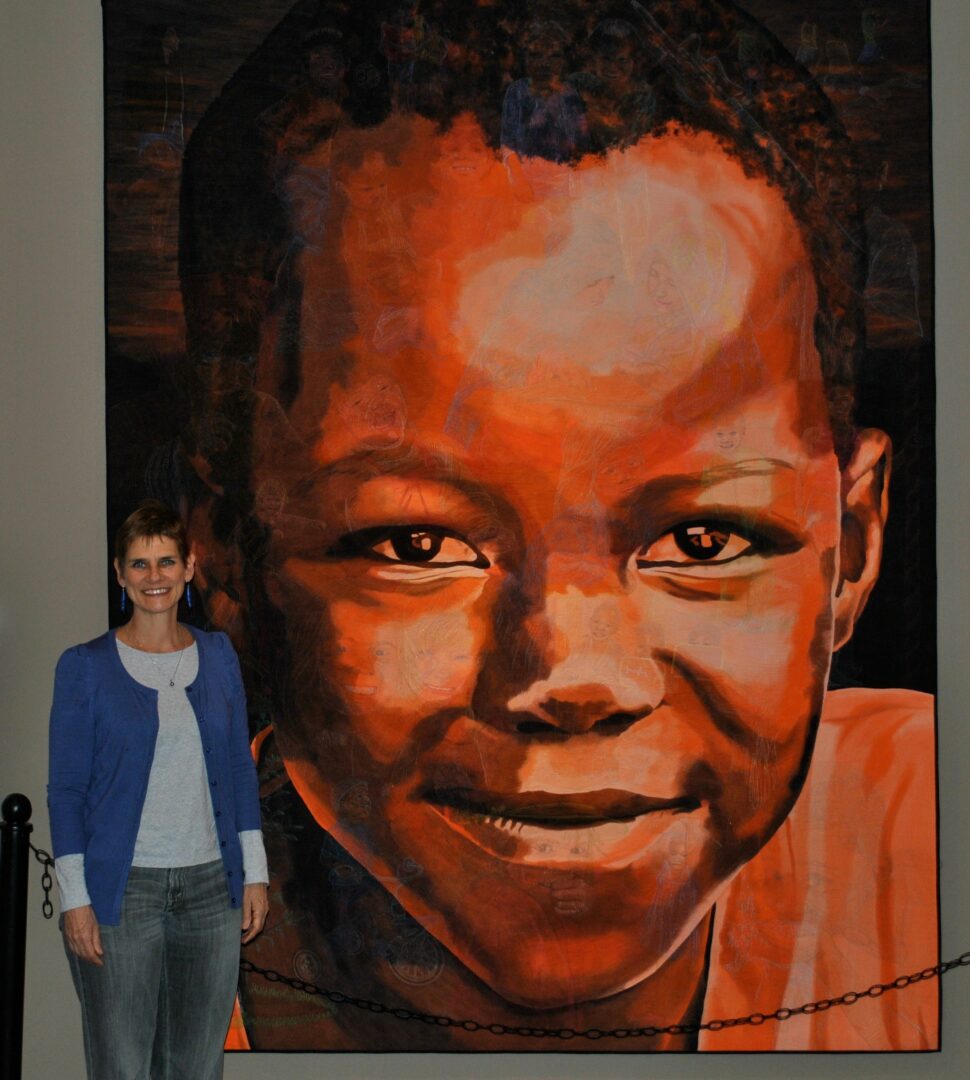
What would you advise – going all in on your strengths or investing on areas where you aren’t as strong to be more well-rounded?
My goal is to create an emotional piece of art where my viewer relates to my message. This is where I would like the center of my attention to be so I have chosen to focus on understanding and refining my techniques to attain my desired result.
After three decades of trial & error, lots of practice, and teaching both dye-painting and quilting, they have almost become second nature.
Having the expertise in my technique helps me to bring across the emotions that I search for. But maintaining that competence means that I must continue to study color, drawing, design, and other artists. Studying also helps me to know the limitations of the mediums, and when to turn to other techniques.
Even though these are the techniques that I have concentrated on, I continue to experiment and play, keeping up with the new and innovative. But, after periods of experimentation, I invariably return to my dye-painting because I realize that if I invest my efforts in too many directions I tend to lose my focus.
Contact Info:
- Website: https://www.hollisart.com
- Instagram: HollisChatelain
- Facebook: Hollis Chatelain Textile Artist
- Linkedin: Hollis Chatelain
- Other: I just started a Bluesky account. My handle is @hollischatelain.bsky.social
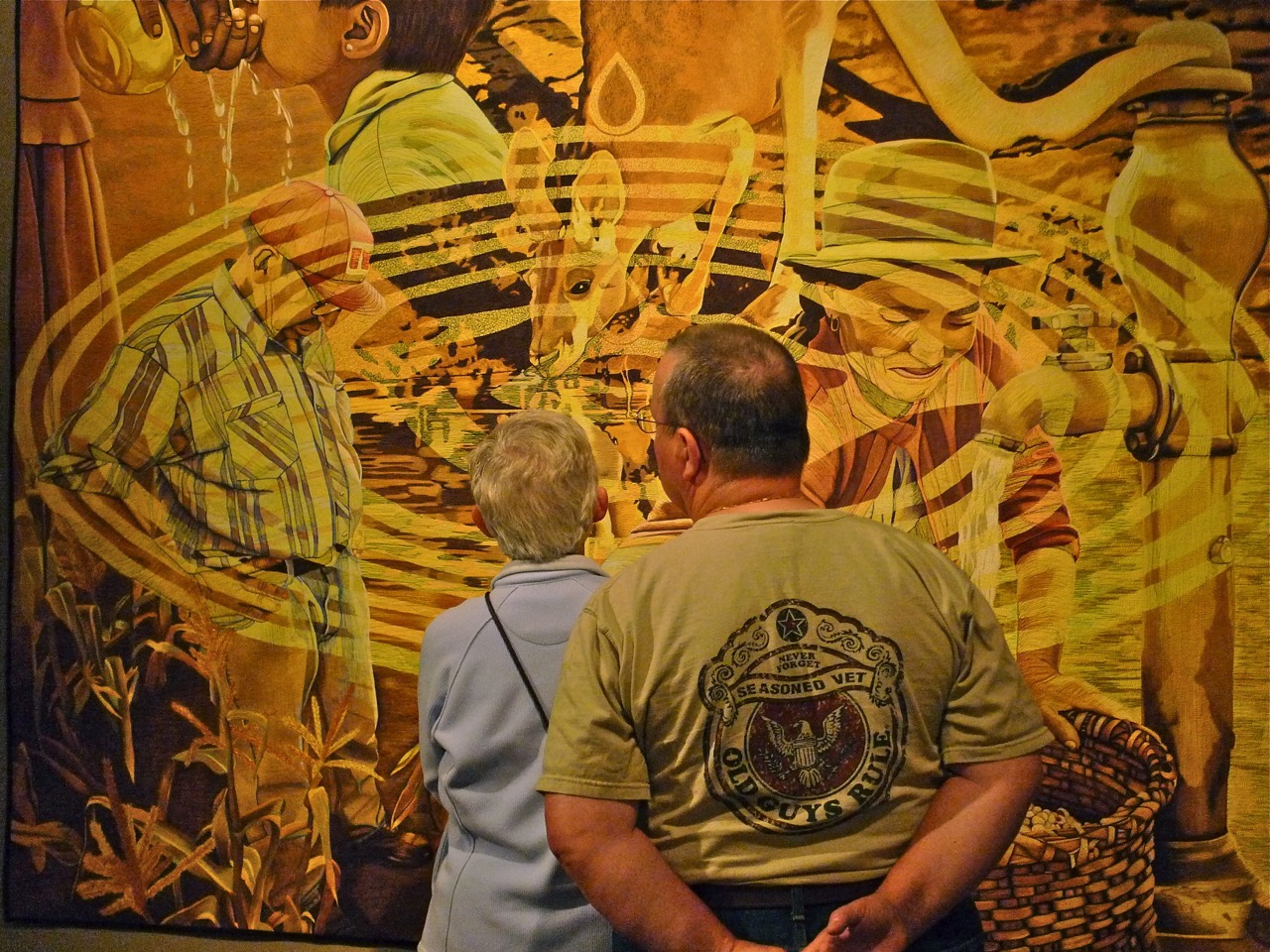
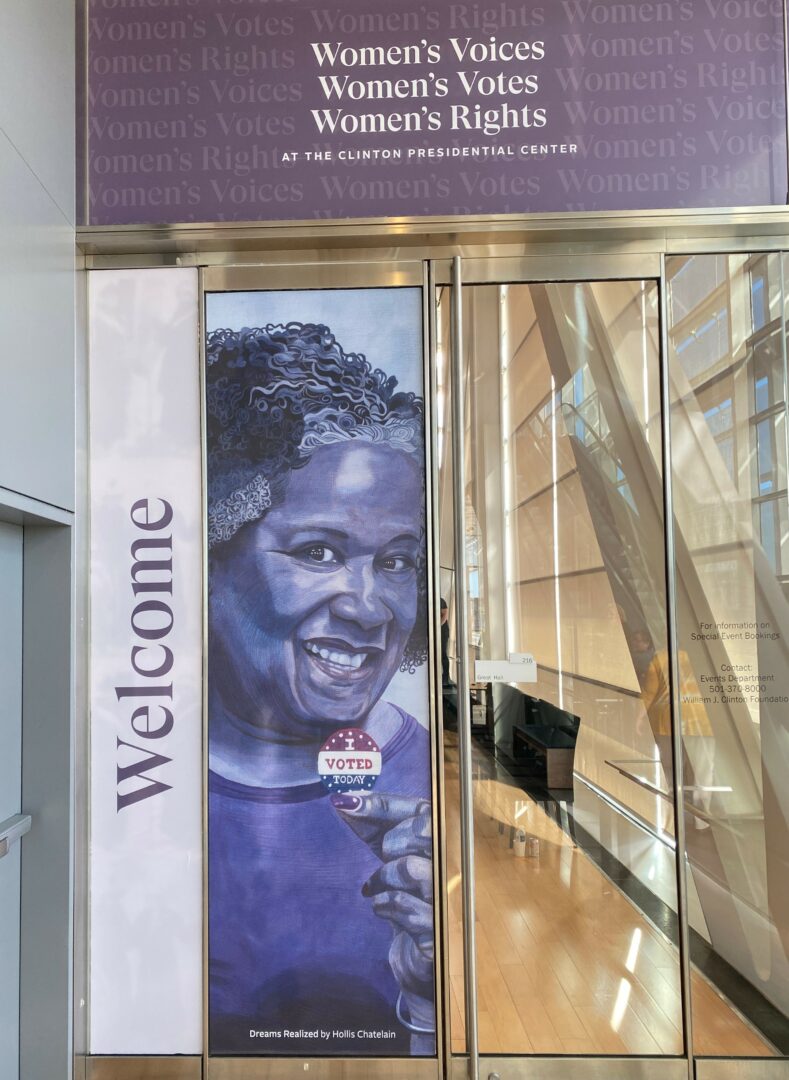
Image Credits
All photos taken by Hollis Chatelain and Reynald Chatelain
so if you or someone you know deserves recognition please let us know here.

